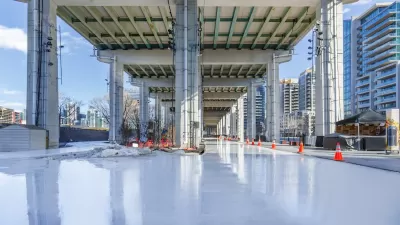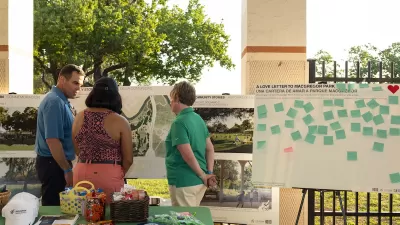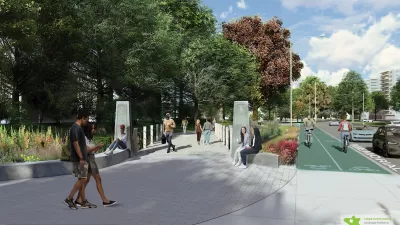New research finds that different types of parks correlate with different gentrification effects, adding to the complexity of urban change.

Richard Florida shares news of a new study by Alessandro Rigolon of the University of Utah and Jeremy Németh of the University of Colorado, which examines the nuances of gentrification in relation to parks and open space in urban areas.
The study is notable because it characterizes different kinds of parks to reveal nuances in gentrification effect. The study distinguished parks based on "size, overall quality, whether they are new, proximity to downtown, and whether or not they are linear “greenway parks,” longer than a mile, that include an active transportation component like bike lanes," explains Florida.
The findings support the claim that not all kinds of parks have the same kind of effect. Long linear parks, like the Beltline in Atlanta, cause the most significant effect.
"According to the study, being located within a half-mile of a new greenway park increases the odds that a neighborhood will gentrify by more than 200 percent (their actual estimates range from 222 to 236 percent). Five of seven new greenway parks in the study spurred significant gentrification in their surrounding neighborhoods, including New York’s High Line, Chicago’s 606 trail, and Houston’s Buffalo Bayou Park."
Parks located close to downtown also correlate to more gentrification, but several kinds of parks didn't show the same effect. The size of the park, for instance, does not correlate to gentrification effects.
The article includes more detail on the findings, the methodology of the study, and speculation about why some parks are more likely to be found near gentrifying neighborhoods are included in the source article.
FULL STORY: Why Greenway Parks Cause Greater Gentrification

Maui's Vacation Rental Debate Turns Ugly
Verbal attacks, misinformation campaigns and fistfights plague a high-stakes debate to convert thousands of vacation rentals into long-term housing.

Planetizen Federal Action Tracker
A weekly monitor of how Trump’s orders and actions are impacting planners and planning in America.

Chicago’s Ghost Rails
Just beneath the surface of the modern city lie the remnants of its expansive early 20th-century streetcar system.

Bend, Oregon Zoning Reforms Prioritize Small-Scale Housing
The city altered its zoning code to allow multi-family housing and eliminated parking mandates citywide.

Amtrak Cutting Jobs, Funding to High-Speed Rail
The agency plans to cut 10 percent of its workforce and has confirmed it will not fund new high-speed rail projects.

LA Denies Basic Services to Unhoused Residents
The city has repeatedly failed to respond to requests for trash pickup at encampment sites, and eliminated a program that provided mobile showers and toilets.
Urban Design for Planners 1: Software Tools
This six-course series explores essential urban design concepts using open source software and equips planners with the tools they need to participate fully in the urban design process.
Planning for Universal Design
Learn the tools for implementing Universal Design in planning regulations.
planning NEXT
Appalachian Highlands Housing Partners
Mpact (founded as Rail~Volution)
City of Camden Redevelopment Agency
City of Astoria
City of Portland
City of Laramie





























